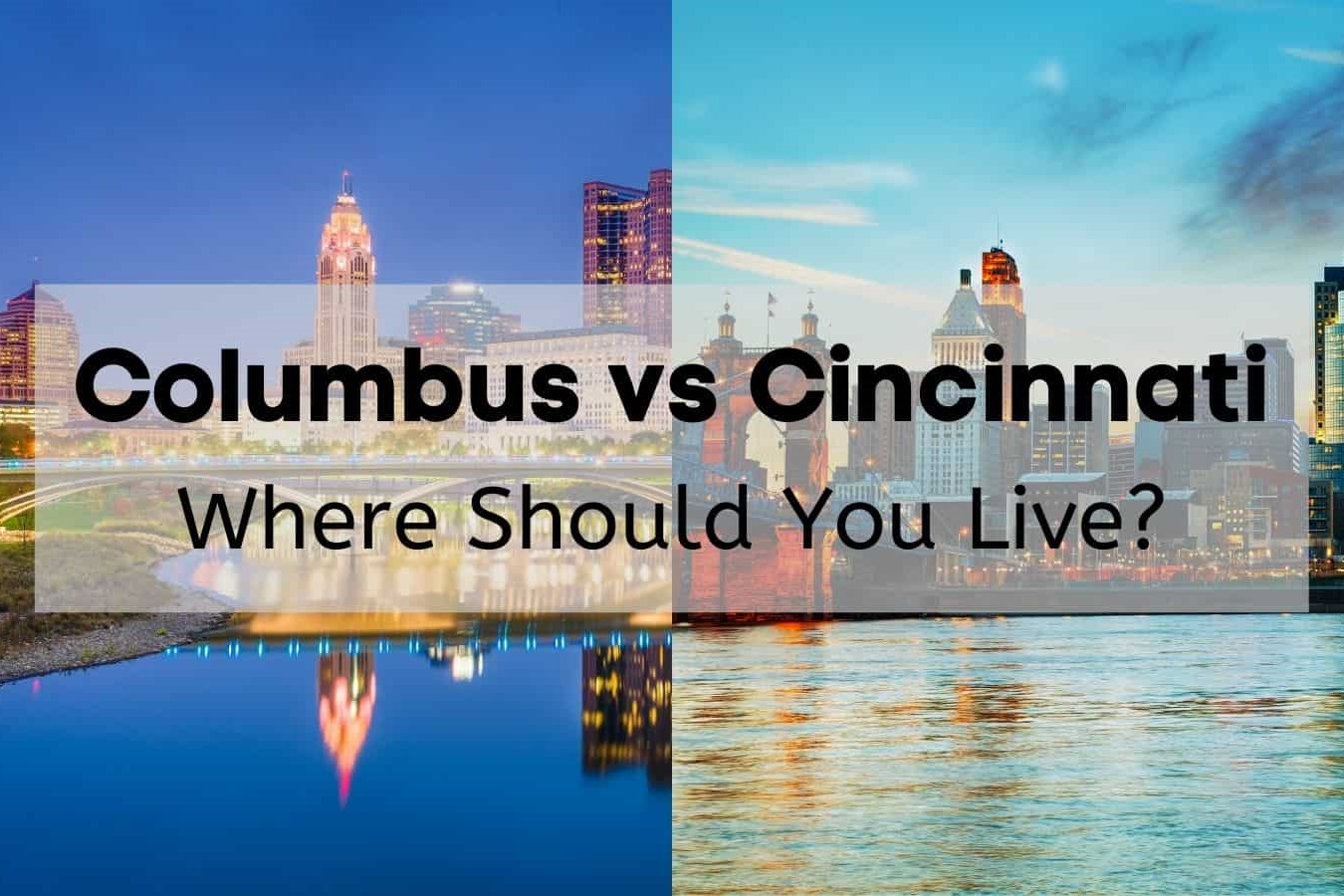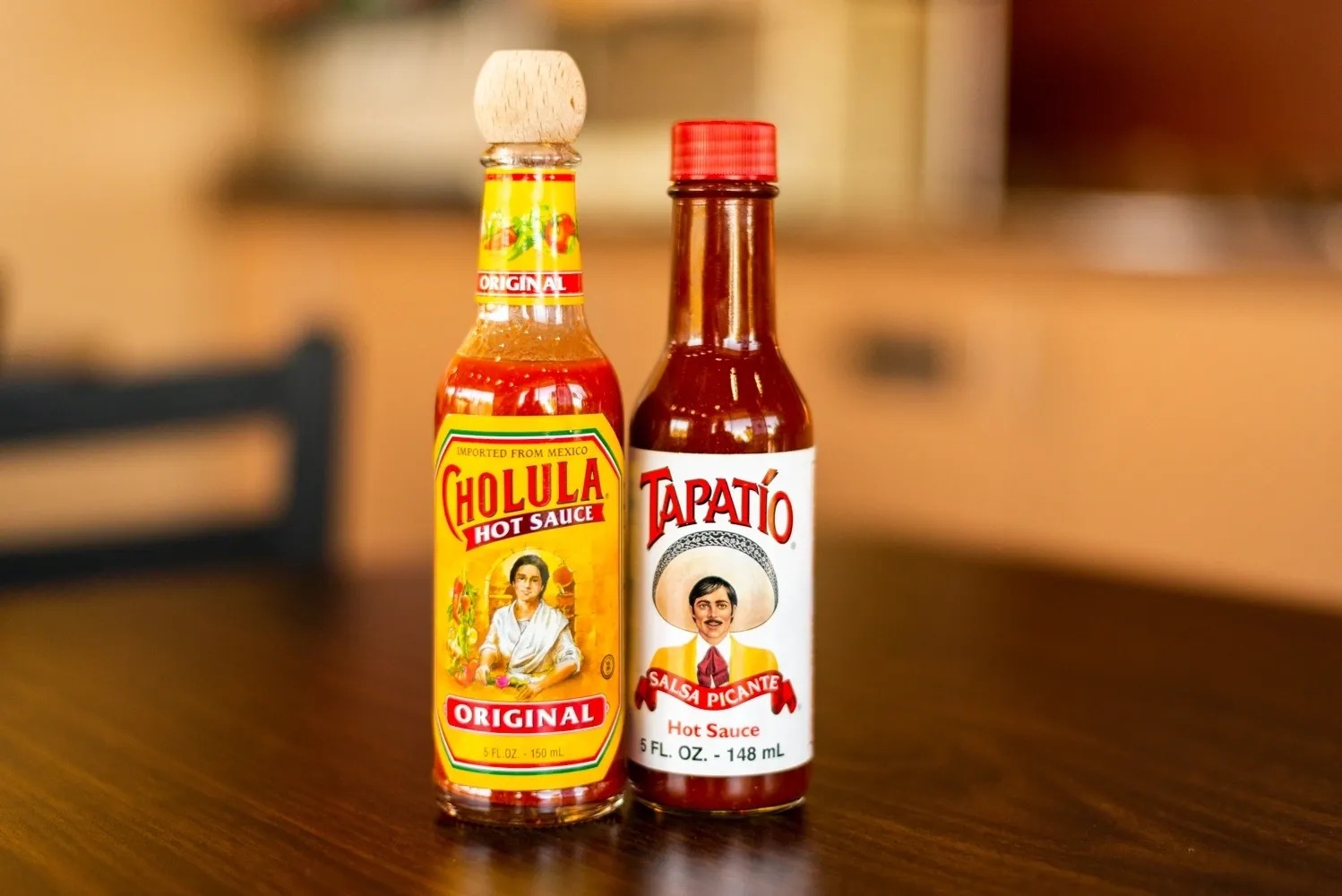Home>Lifestyle>The Ultimate Showdown: Miami Vs. New York – Which City Reigns Supreme?


Lifestyle
The Ultimate Showdown: Miami Vs. New York – Which City Reigns Supreme?
Published: February 14, 2024
Discover the ultimate lifestyle showdown between Miami and New York. Uncover which city reigns supreme in culture, entertainment, and more. Choose your next urban adventure!
(Many of the links in this article redirect to a specific reviewed product. Your purchase of these products through affiliate links helps to generate commission for Noodls.com, at no extra cost. Learn more)
Table of Contents
Introduction
Miami and New York City are two iconic metropolises that have captured the imagination of people around the world. Each city boasts a unique blend of culture, history, and lifestyle, making them prime destinations for residents and tourists alike. While Miami is renowned for its vibrant beaches, Latin American influence, and pulsating nightlife, New York City stands as a global hub of finance, culture, and diversity. As we delve into the ultimate showdown between these two urban giants, we will explore various aspects such as history and culture, weather and climate, cost of living, entertainment and nightlife, food and dining, transportation and infrastructure, job opportunities and economy, as well as education and schools. By comparing and contrasting these key factors, we aim to uncover which city truly reigns supreme in the realm of lifestyle and urban living.
History and Culture
Miami and New York City boast rich and diverse histories that have shaped their unique cultural identities. Miami, with its roots tracing back to the Tequesta and Seminole Native American tribes, has evolved into a melting pot of cultures, heavily influenced by its proximity to the Caribbean and Latin America. The city's vibrant Cuban, Haitian, and Colombian communities have significantly contributed to its colorful tapestry of traditions, music, and cuisine. The iconic Art Deco architecture of South Beach, a testament to Miami's glamorous past, stands as a living museum of the city's history.
In contrast, New York City's history is a captivating narrative of immigration, innovation, and resilience. From the arrival of Dutch settlers in the 17th century to becoming a global center of commerce and culture, the city has been a beacon of opportunity for people from all walks of life. The diverse neighborhoods of New York, such as Chinatown, Little Italy, and Harlem, reflect the waves of immigration that have enriched the city's cultural fabric. The iconic landmarks like the Statue of Liberty, Empire State Building, and Broadway theaters stand as testaments to the city's enduring spirit and cultural significance.
Both cities have thriving art scenes, with Miami's Wynwood Walls showcasing vibrant street art and New York's Museum Mile offering a treasure trove of artistic masterpieces. Furthermore, Miami's annual Art Basel event and New York's renowned Metropolitan Museum of Art underscore the cities' commitment to fostering creativity and cultural exchange.
In essence, Miami and New York City stand as living testaments to the power of diversity, innovation, and cultural exchange. While Miami's Latin American influence and beachside allure paint a picture of sun-soaked vibrancy, New York City's global prominence and storied past embody the epitome of urban dynamism and resilience. These cities continue to evolve, embracing their rich histories while shaping the cultural landscapes of tomorrow.
Weather and Climate
Miami and New York City offer starkly contrasting climates, each with its own unique appeal. Miami, known for its tropical monsoon climate, boasts warm temperatures year-round, making it a haven for sun-seekers and beach enthusiasts. The city's average annual temperature hovers around 77°F (25°C), with mild winters and hot, humid summers. The balmy climate creates an idyllic setting for outdoor activities, from leisurely strolls along the palm-fringed shores to exhilarating water sports in the azure waters of the Atlantic Ocean.
In contrast, New York City experiences a humid subtropical climate, characterized by distinct seasonal variations. Winters in the Big Apple are marked by chilly temperatures, often dipping below freezing, and occasional snowfall, transforming the city into a winter wonderland. Spring brings a burst of color as cherry blossoms adorn Central Park, while summers are warm and humid, ideal for outdoor concerts and al fresco dining. The vibrant hues of autumn foliage paint a picturesque backdrop, making fall a favorite season for many New Yorkers.
The contrasting climates of Miami and New York City cater to diverse preferences, offering residents and visitors the opportunity to experience a wide range of weather conditions. Whether one seeks the perpetual summer of Miami or the distinct seasons of New York City, both cities provide an array of outdoor experiences and seasonal festivities to suit every taste.
In summary, Miami's perpetual warmth and sunshine beckon those who revel in tropical climates, while New York City's seasonal changes offer a dynamic backdrop for residents and tourists alike. Whether it's basking in the year-round warmth of Miami or embracing the seasonal ebb and flow of New York City, both cities present distinct weather and climate experiences that contribute to their unique allure.
Cost of Living
The cost of living is a crucial factor that significantly influences the lifestyle and financial well-being of residents in any city. When comparing the cost of living between Miami and New York City, several key aspects come into play, including housing, utilities, transportation, healthcare, and everyday expenses.
In Miami, the cost of living is notably lower than in New York City, particularly in terms of housing. The median home prices in Miami are generally more affordable, offering a range of options for prospective homeowners. Rental costs in Miami also tend to be lower compared to New York City, providing residents with more flexibility in their housing choices. Additionally, the absence of state income tax in Florida contributes to a favorable financial landscape for many individuals and families.
On the other hand, New York City is renowned for its high cost of living, especially when it comes to housing. The demand for real estate in the city often results in steep rental prices and property values, making it a challenging market for those seeking affordable housing options. However, the city's extensive public transportation system, including subways and buses, offers a cost-effective means of getting around, potentially offsetting some of the housing-related expenses.
When considering everyday expenses such as groceries, dining, and entertainment, Miami generally offers a more budget-friendly environment compared to New York City. The diverse culinary scene in Miami provides an array of dining options at various price points, catering to different budgets and tastes. Similarly, entertainment and leisure activities in Miami can be enjoyed without breaking the bank, with an abundance of free or low-cost cultural events and outdoor attractions.
In contrast, New York City's vibrant cultural offerings and world-class dining and entertainment venues often come with higher price tags. While the city provides an unparalleled array of experiences, residents may need to allocate a larger portion of their budget to enjoy the full spectrum of offerings available.
In summary, the cost of living in Miami generally presents a more affordable prospect for individuals and families, particularly in terms of housing and everyday expenses. On the other hand, New York City's higher cost of living, especially in housing and certain lifestyle amenities, reflects the premium associated with the city's unparalleled cultural and urban offerings. Ultimately, the choice between Miami and New York City in terms of cost of living hinges on individual preferences, financial considerations, and lifestyle priorities.
Entertainment and Nightlife
Miami and New York City are renowned for their vibrant entertainment scenes and electrifying nightlife, each offering a distinct array of experiences that cater to diverse tastes and preferences.
In Miami, the pulsating rhythm of Latin music permeates the city's nightlife, creating an atmosphere of infectious energy and celebration. From the sizzling beats of salsa and reggaeton to the sultry melodies of bachata, Miami's nightclubs and dance venues come alive with the vibrant sounds of Latin music. The iconic South Beach stands as a beacon of nocturnal revelry, with its trendy bars, chic lounges, and high-energy nightclubs that pulse with life well into the early hours. The city's diverse cultural influences also manifest in its entertainment offerings, with live music venues showcasing a fusion of Caribbean, jazz, and electronic beats, providing an eclectic tapestry of musical experiences for residents and visitors alike.
In contrast, New York City's entertainment and nightlife scene is a dynamic mosaic of sophistication, diversity, and innovation. The city's renowned Broadway theaters stand as a global epicenter of theatrical excellence, offering a dazzling array of world-class productions that span the spectrum of drama, comedy, and musical theater. The vibrant nightlife of New York City extends far beyond the theater district, encompassing an eclectic mix of rooftop bars, speakeasies, jazz clubs, and live music venues that cater to every conceivable taste. From the trendy enclaves of Williamsburg in Brooklyn to the iconic jazz haunts of Harlem, the city pulsates with an electrifying energy that beckons revelers to immerse themselves in its kaleidoscopic nightlife offerings.
Both Miami and New York City boast a rich tapestry of entertainment and nightlife options, each reflecting the unique cultural influences and urban dynamism of their respective locales. Whether it's savoring the sultry rhythms of Miami's Latin-infused nightlife or immersing oneself in the cosmopolitan allure of New York City's diverse entertainment landscape, both cities offer an unparalleled array of experiences that captivate the senses and ignite the spirit.
In essence, the entertainment and nightlife scenes of Miami and New York City stand as vibrant reflections of the cities' cultural identities, offering residents and visitors an endless tapestry of experiences that embody the essence of urban vitality and creative expression.
Food and Dining
Miami and New York City are culinary meccas, each offering a delectable tapestry of flavors and dining experiences that reflect their diverse cultural influences and vibrant urban landscapes.
In Miami, the culinary scene is a tantalizing fusion of Latin American, Caribbean, and international cuisines, creating a gastronomic paradise for food enthusiasts. The city's vibrant neighborhoods, such as Little Havana and Wynwood, are adorned with an array of eateries, from family-owned Cuban restaurants serving succulent lechón and ropa vieja to trendy fusion kitchens infusing Caribbean and Latin flavors with a modern twist. Miami's proximity to the ocean also translates into a bounty of fresh seafood, with waterfront restaurants offering a tantalizing array of ceviche, grilled fish, and seafood paella. Furthermore, the city's food truck culture adds a delightful element of culinary exploration, with mobile kitchens dishing out gourmet treats ranging from savory arepas to indulgent ice cream sandwiches. Whether savoring a cafecito at a local Cuban bakery or indulging in a lavish waterfront dining experience, Miami's food and dining scene embodies a vibrant celebration of flavors and cultural diversity.
In contrast, New York City's dining landscape is a captivating mosaic of global cuisines, reflecting the city's status as a melting pot of cultures and culinary traditions. From the aromatic streets of Little Italy to the bustling markets of Chinatown, the city offers an unparalleled array of international flavors, from authentic dim sum and hand-pulled noodles to traditional Neapolitan pizzas and artisanal gelato. The diverse neighborhoods of New York City also boast a rich tapestry of culinary experiences, with iconic delis serving towering pastrami sandwiches, upscale steakhouses grilling prime cuts of beef, and trendy eateries reimagining classic dishes with a contemporary flair. Additionally, the city's food markets, such as Chelsea Market and Smorgasburg, provide epicurean havens where visitors can sample an eclectic array of gourmet delights, from artisanal cheeses and charcuterie to global street food offerings. Whether savoring a classic New York slice or embarking on a culinary journey through the city's diverse neighborhoods, New York City's food and dining scene offers an unrivaled exploration of global flavors and gastronomic innovation.
In essence, Miami and New York City stand as epicurean playgrounds, each offering a tantalizing array of culinary experiences that celebrate their cultural diversity and urban dynamism. Whether indulging in the vibrant flavors of Miami's Latin-infused cuisine or embarking on a global culinary odyssey through the diverse neighborhoods of New York City, both cities present a feast for the senses and a celebration of culinary creativity.
Transportation and Infrastructure
Transportation and infrastructure play pivotal roles in shaping the urban experience, providing essential connectivity and accessibility for residents and visitors alike. When comparing the transportation systems and infrastructure of Miami and New York City, distinct contrasts and unique features come to the forefront, reflecting the diverse needs and urban dynamics of each city.
In Miami, the transportation landscape is characterized by a network of highways, causeways, and arterial roads that facilitate connectivity across the city and its surrounding areas. The iconic Metrorail and Metromover systems provide efficient public transit options, offering residents and tourists convenient access to key destinations, including downtown Miami, Coral Gables, and Miami International Airport. Additionally, the city's vibrant cycling culture is supported by an expanding network of bike lanes and trails, promoting eco-friendly mobility and active transportation. Miami's strategic investments in infrastructure, such as the PortMiami expansion and ongoing transit initiatives, underscore the city's commitment to enhancing connectivity and accommodating its growing population.
In contrast, New York City boasts an extensive and iconic transportation network that is integral to the city's bustling urban fabric. The subway system, with its labyrinthine network of lines and stations, serves as a lifeline for millions of New Yorkers, providing rapid transit access to all corners of the city. The iconic yellow taxis, iconic symbols of the city's streets, offer convenient point-to-point transportation, while the extensive bus network complements the subway system, providing comprehensive coverage across the five boroughs. Furthermore, the city's infrastructure landmarks, such as the Verrazzano-Narrows Bridge and the Staten Island Ferry, stand as testaments to New York City's commitment to fostering connectivity and mobility on a grand scale.
Both Miami and New York City continue to invest in innovative transportation solutions, with Miami focusing on expanding its public transit options and enhancing connectivity, while New York City prioritizes infrastructure maintenance and modernization to meet the evolving needs of its residents and businesses. The distinct transportation and infrastructure landscapes of Miami and New York City reflect the cities' unique urban dynamics and the ongoing efforts to provide efficient, sustainable, and accessible mobility options for their diverse populations.
In essence, the transportation and infrastructure of Miami and New York City serve as vital arteries that pulse with the energy of urban life, shaping the daily experiences of residents and visitors while embodying the cities' commitment to connectivity, accessibility, and sustainable mobility.
Job Opportunities and Economy
Miami and New York City stand as economic powerhouses, each offering a wealth of job opportunities and contributing to the vibrant tapestry of the American economy.
In Miami, the economy is fueled by a diverse array of industries, with a strong emphasis on tourism, international trade, finance, and technology. The city's strategic location as the gateway to Latin America has positioned it as a hub for international commerce and trade, fostering a dynamic business environment that attracts multinational corporations and entrepreneurial ventures alike. Additionally, Miami's burgeoning technology sector, often referred to as the "Silicon Beach," has seen remarkable growth, with a burgeoning ecosystem of startups and innovation-driven enterprises contributing to the city's economic vitality. The city's robust tourism industry, anchored by its world-renowned beaches, cultural attractions, and vibrant events, serves as a significant source of employment and economic activity, further bolstering Miami's position as a thriving economic center.
On the other hand, New York City's economy stands as a global juggernaut, encompassing a diverse array of sectors, including finance, media, technology, fashion, and healthcare. The city's financial district, often referred to as Wall Street, serves as a global epicenter of finance and commerce, attracting top talent and driving the pulse of the global economy. Additionally, New York City's thriving media and entertainment industry, centered around iconic institutions such as Broadway and major television networks, provides a wealth of employment opportunities and contributes to the city's cultural and economic vibrancy. The city's status as a global fashion capital further enhances its economic landscape, with a robust ecosystem of designers, retailers, and creative professionals shaping the pulse of the industry.
Both Miami and New York City offer a wealth of job opportunities across diverse sectors, catering to professionals with varied skill sets and career aspirations. Whether it's the entrepreneurial spirit and international connectivity of Miami or the global prominence and diverse industry landscape of New York City, both cities stand as beacons of economic opportunity, attracting talent from around the world and fueling the engine of the American economy.
In essence, Miami and New York City's economic landscapes reflect their unique strengths and global significance, offering a wealth of job opportunities and contributing to the dynamic tapestry of the American economy.
Education and Schools
Education is a cornerstone of societal development, and both Miami and New York City are committed to providing diverse and enriching educational opportunities for their residents.
In Miami, the city's educational landscape is characterized by a rich tapestry of public, private, and charter schools, offering a wide array of academic programs and extracurricular activities. The Miami-Dade County Public Schools, one of the largest and most diverse school districts in the nation, serves as the backbone of the city's public education system. The district's commitment to academic excellence and innovation is evident through its magnet programs, which cater to students' diverse interests, including the arts, STEM, and international studies. Additionally, Miami's vibrant cultural heritage is reflected in the curriculum and extracurricular offerings, providing students with opportunities to explore and celebrate the city's rich multicultural tapestry. Furthermore, the city's private and charter schools offer alternative educational models and specialized programs, catering to the diverse needs and preferences of families across the metropolitan area.
In contrast, New York City's educational landscape is marked by a rich tradition of academic excellence and cultural diversity. The New York City Department of Education oversees the nation's largest public school system, comprising a vast network of elementary, middle, and high schools. The city's renowned specialized high schools, such as Stuyvesant High School and Bronx High School of Science, are celebrated for their rigorous academic programs and emphasis on cultivating talent in science, technology, engineering, and mathematics (STEM) fields. Additionally, the city's vibrant arts and cultural scene permeates its educational institutions, providing students with access to world-class museums, theaters, and cultural institutions as extensions of their learning environments. The city's private schools, ranging from elite preparatory academies to specialized institutions, offer families a diverse array of educational options, each with its unique approach to academic excellence and holistic development.
Both Miami and New York City are home to esteemed higher education institutions, including universities, colleges, and research centers, providing students with a pathway to pursue higher learning and academic advancement. Miami's vibrant academic landscape is anchored by institutions such as the University of Miami and Florida International University, known for their research initiatives and diverse academic programs. In contrast, New York City's higher education landscape is defined by iconic institutions such as Columbia University, New York University, and The City University of New York, offering a wealth of academic disciplines and research opportunities.
In essence, Miami and New York City's commitment to education and schools reflects their dedication to nurturing the next generation of leaders, innovators, and global citizens. The cities' diverse educational landscapes, rich cultural offerings, and academic excellence underscore their roles as dynamic centers of learning and intellectual growth.
Conclusion
In the ultimate showdown between Miami and New York City, it becomes evident that both cities stand as vibrant epicenters of culture, diversity, and urban vitality. Miami's sun-soaked beaches, Latin American influence, and pulsating nightlife paint a picture of tropical allure and multicultural vibrancy, while New York City's global prominence, storied history, and diverse neighborhoods embody the epitome of urban dynamism and resilience.
The rich histories and cultural tapestries of Miami and New York City weave a narrative of diversity, innovation, and the enduring spirit of human endeavor. From Miami's colorful Art Deco architecture and Latin-infused entertainment to New York City's iconic landmarks, world-class theaters, and global culinary offerings, both cities offer an unparalleled array of experiences that captivate the senses and ignite the spirit.
The contrasting climates of perpetual warmth in Miami and the distinct seasons of New York City cater to diverse preferences, offering residents and visitors the opportunity to experience a wide range of weather conditions and seasonal festivities. Whether it's basking in the year-round sunshine of Miami or embracing the seasonal ebb and flow of New York City, both cities provide an array of outdoor experiences and cultural celebrations to suit every taste.
In terms of cost of living, Miami generally presents a more affordable prospect for individuals and families, particularly in terms of housing and everyday expenses, while New York City's higher cost of living reflects the premium associated with its unparalleled cultural and urban offerings. The choice between Miami and New York City in terms of cost of living hinges on individual preferences, financial considerations, and lifestyle priorities.
The vibrant entertainment and nightlife scenes of Miami and New York City reflect the cities' cultural identities, offering residents and visitors an endless tapestry of experiences that embody the essence of urban vitality and creative expression. Whether it's savoring the sultry rhythms of Miami's Latin-infused nightlife or immersing oneself in the cosmopolitan allure of New York City's diverse entertainment landscape, both cities offer an unparalleled array of experiences that captivate the senses and ignite the spirit.
The culinary scenes of Miami and New York City celebrate their cultural diversity and urban dynamism, offering a feast for the senses and a celebration of culinary creativity. Whether indulging in the vibrant flavors of Miami's Latin-infused cuisine or embarking on a global culinary odyssey through the diverse neighborhoods of New York City, both cities present a tantalizing array of culinary experiences that captivate the palate and celebrate the art of gastronomy.
The transportation and infrastructure of Miami and New York City serve as vital arteries that pulse with the energy of urban life, shaping the daily experiences of residents and visitors while embodying the cities' commitment to connectivity, accessibility, and sustainable mobility. The distinct transportation and infrastructure landscapes of Miami and New York City reflect the cities' unique urban dynamics and the ongoing efforts to provide efficient, sustainable, and accessible mobility options for their diverse populations.
Miami and New York City's economic landscapes reflect their unique strengths and global significance, offering a wealth of job opportunities and contributing to the dynamic tapestry of the American economy. Whether it's the entrepreneurial spirit and international connectivity of Miami or the global prominence and diverse industry landscape of New York City, both cities stand as beacons of economic opportunity, attracting talent from around the world and fueling the engine of the American economy.
The commitment to education and schools in Miami and New York City underscores their dedication to nurturing the next generation of leaders, innovators, and global citizens. The cities' diverse educational landscapes, rich cultural offerings, and academic excellence underscore their roles as dynamic centers of learning and intellectual growth.
In conclusion, the ultimate showdown between Miami and New York City reveals that both cities reign supreme in their own right, each offering a distinct tapestry of experiences, cultural vibrancy, and urban allure. Whether it's the sun-drenched charm of Miami or the cosmopolitan dynamism of New York City, both cities stand as testaments to the power of diversity, innovation, and the enduring spirit of urban life.













